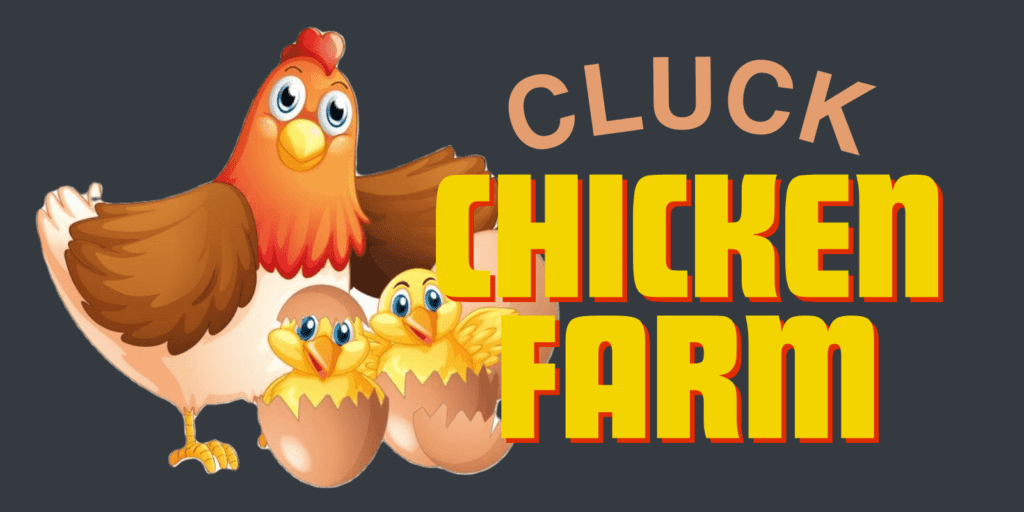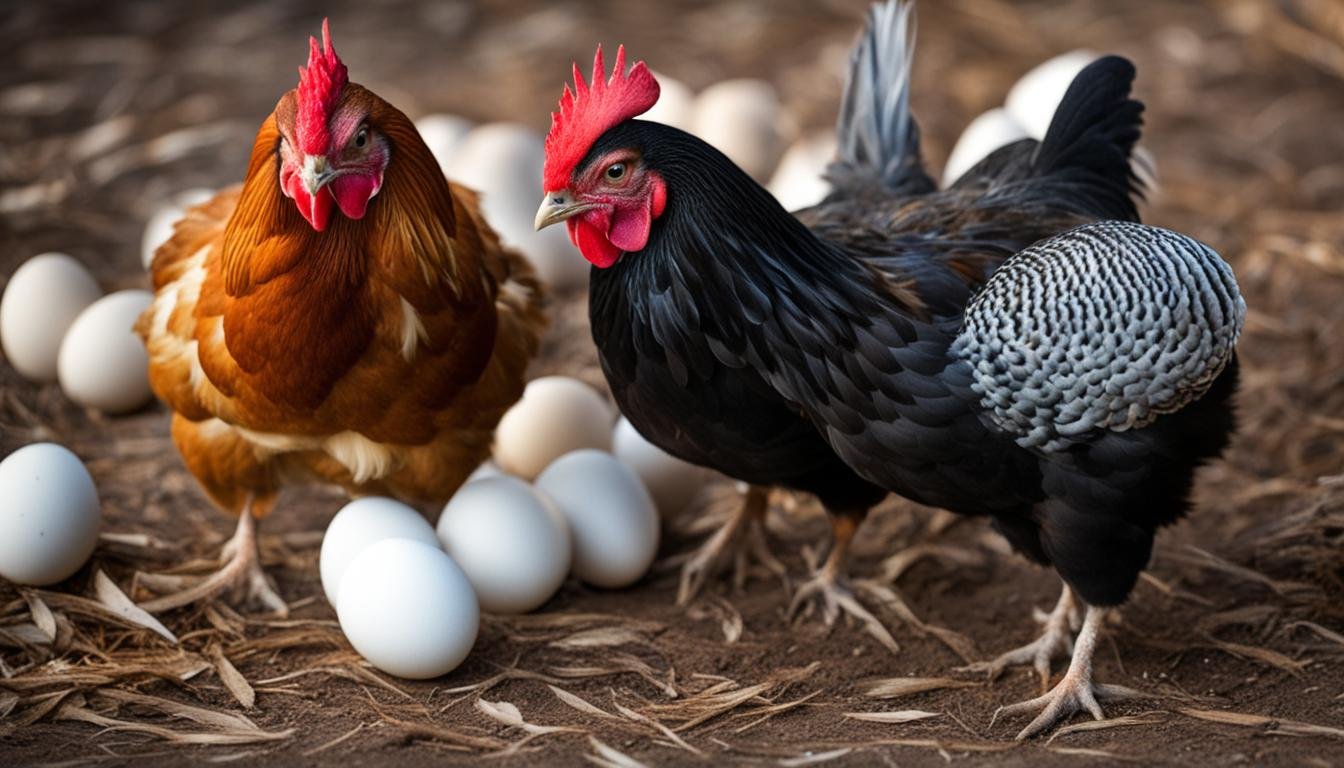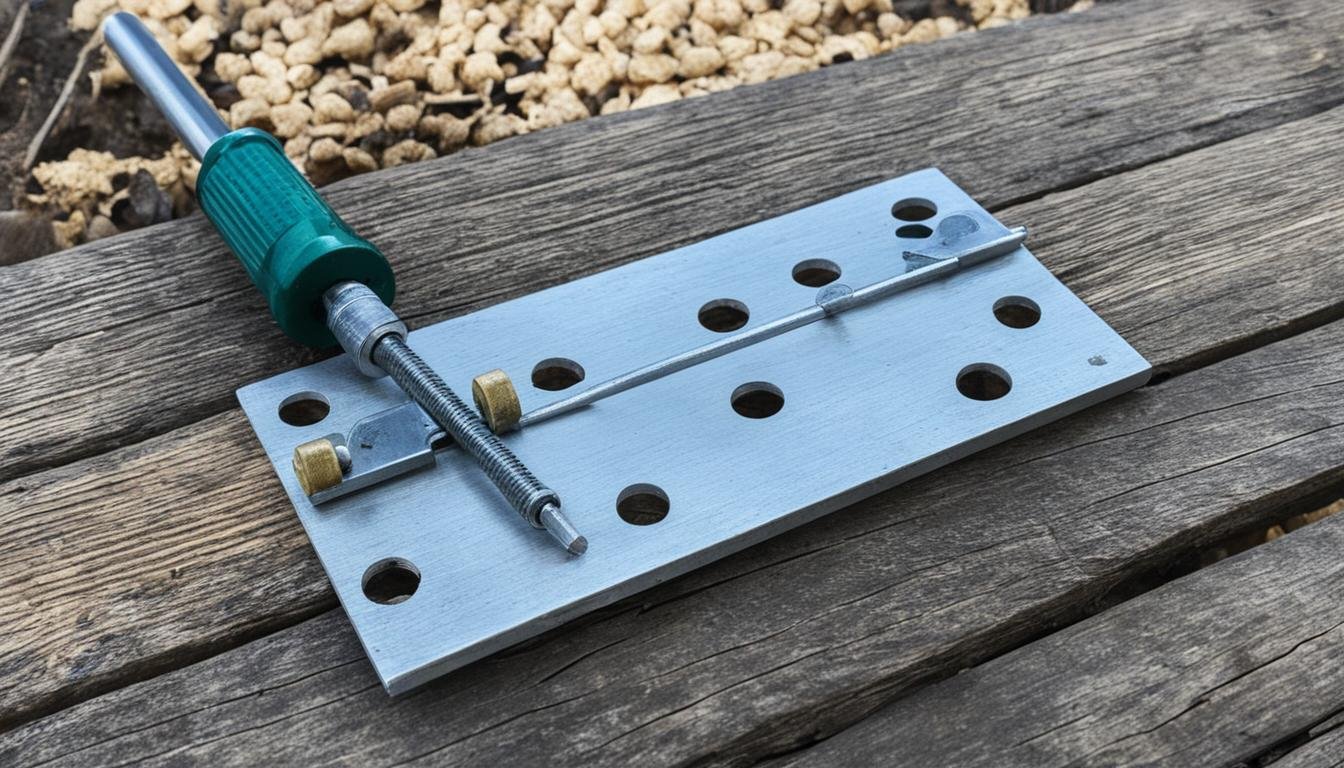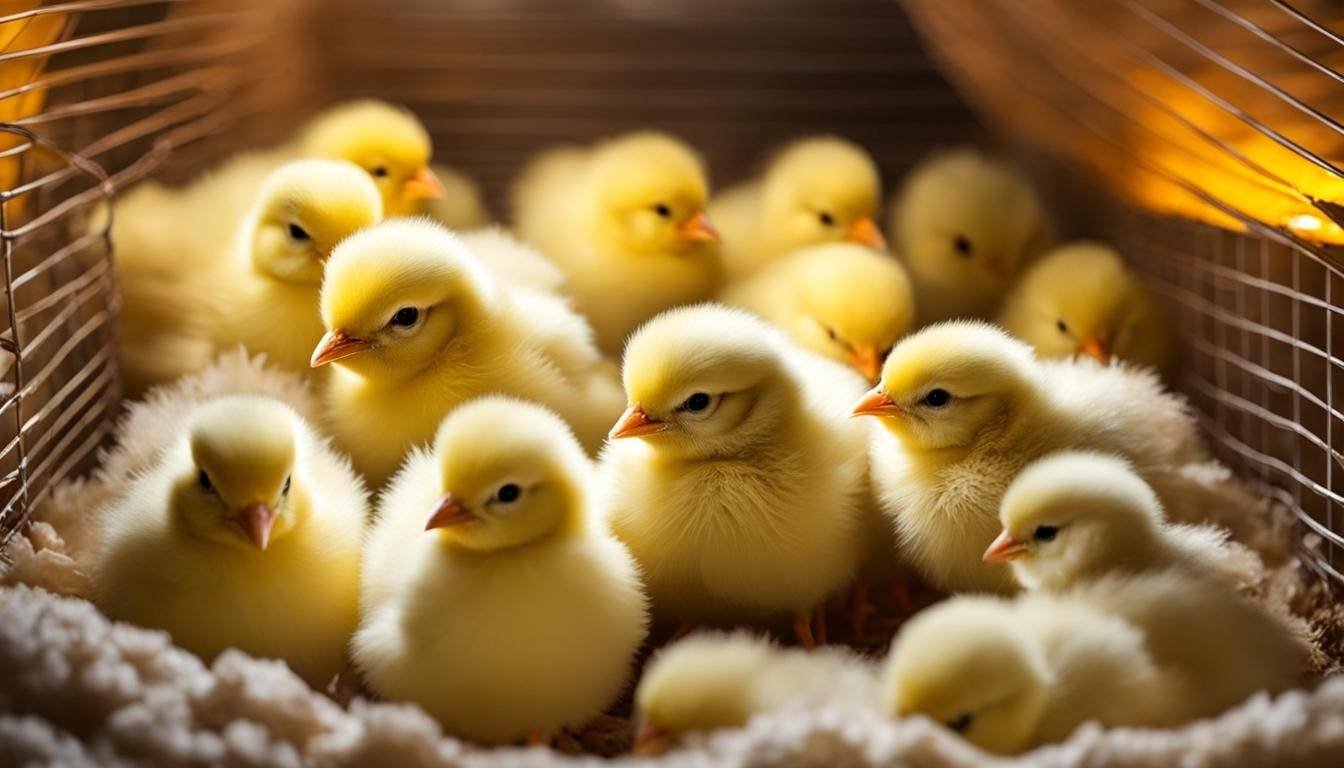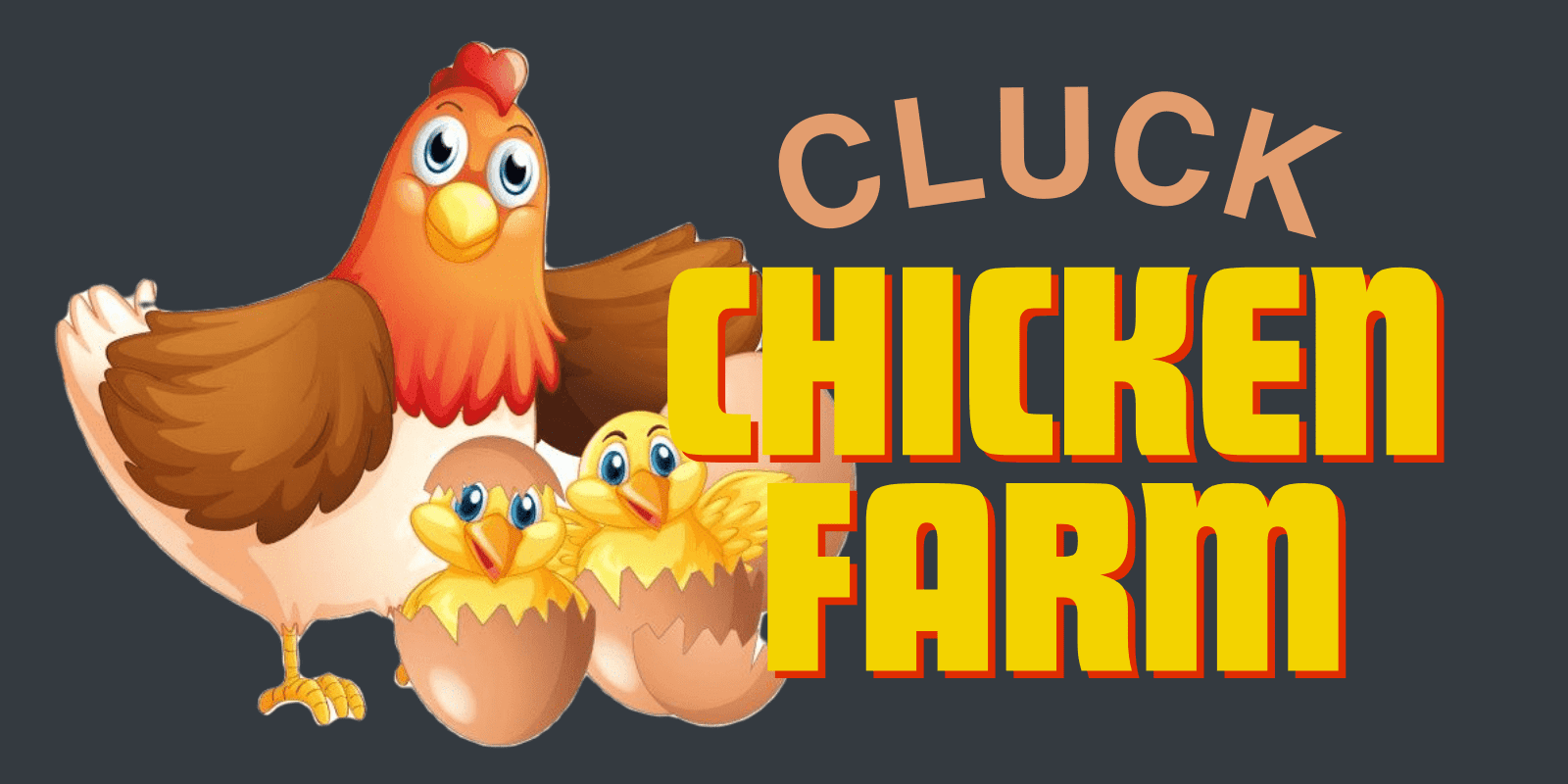Have you ever wondered about the intimate life of chickens? Are you curious about their reproduction and mating behavior? Look no further! In this article, we will dive into the fascinating world of chicken mating and unravel the mysteries behind their courtship rituals, fertility, and selective breeding.
When it comes to chicken mating behavior, it is indeed a visually captivating ritual. The male chicken, known as a rooster, performs elaborate courtship displays to attract the attention of the female chickens, or hens. These displays include mesmerizing wing drags, captivating wattle shakes, and enchanting tidbitting calls.
Hens assess the rooster’s display and signal their readiness to mate by crouching low to the ground. It’s their way of saying, “I’m interested!” This sets the stage for the physical act of copulation, which is often referred to as the “cloacal kiss.” During this intimate moment, sperm is transferred from the rooster to the hen, ensuring the possibility of fertilization.
But the story doesn’t end there! The transferred sperm can remain viable within the hen for weeks, fertilizing the eggs as they are formed and laid. This amazing adaptation allows for the continuous process of chicken reproduction.
So, what about the hens? Do they have a say in choosing the right mate? Absolutely! Hens play an active role in the mating game. They carefully assess the rooster’s courtship displays before giving their consent. They look for strong genetic indicators that will ensure the survival and health of their offspring.
Once a hen has accepted a rooster’s advances, she will signal her readiness to mate by assuming a low crouching position. This posture signifies her acceptance and allows the rooster to mount her. It’s a fascinating dance of attraction and choice in the chicken world.
The transfer of sperm and the subsequent fertilization of eggs are crucial processes in chicken reproduction. After mating, the fertilized eggs can be laid by the hens. However, hens will continue to lay eggs whether they are fertilized or not. It’s an instinctual behavior deeply ingrained in their biology.
In conclusion, the mating process of chickens is a captivating spectacle, balancing courtship displays, mate selection, and genetic exchange. Humans have also leveraged selective breeding to influence chicken mating and promote specific traits in future generations. Understanding the intricacies of chicken reproduction not only provides insight into avian life but also helps us support healthy chicken populations in our care.
Hen Reception: Choosing the Right Mate
In the fascinating mating process of chickens, hens actively participate by carefully assessing the courtship displays of roosters before giving their consent to mate. These discerning females look for specific signs that indicate strong genetic material, ensuring the survival and success of their offspring.
When a hen accepts a rooster’s advances, she indicates her readiness to mate by assuming a distinctive posture – crouching low to the ground. This physical stance serves as a clear signal of her acceptance, inviting the rooster to mount her for copulation.
By actively engaging in the selection process and exhibiting signs of consent, hens play a crucial role in determining the compatibility and genetic quality of their potential mates.
Fertility and Egg-Laying
After mating, the sperm from the rooster can remain viable within the hen for weeks. This allows for the fertilization of eggs as they are formed and laid.
Hens will continue to lay eggs, whether fertilized or not. If conditions are suitable for incubation, the hen may enter a brooding phase to hatch the fertilized eggs. The transfer of sperm and the subsequent fertilization of eggs are essential processes in chicken reproduction.

Sperm Viability in Hens:
Hens possess the unique ability to store viable sperm for an extended period. When a hen mates with a rooster, the sperm is transferred into her reproductive system through the cloacal kiss during copulation. The sperm then travels through the hen’s oviduct, where it can remain stored in specialized storage glands called sperm storage tubules.
The sperm can remain viable within these storage tubules for several weeks, allowing for the fertilization of eggs after they are laid. This biological mechanism ensures that hens have a continuous supply of sperm to fertilize their eggs, even if they haven’t mated recently.
Chicken Egg Fertilization Process:
Once eggs are formed in the hen’s ovary, they travel through the oviduct, where they are fertilized if viable sperm is present. The fertilization of the egg occurs in the upper part of the oviduct, known as the infundibulum. This is where the sperm meets the egg and fertilization takes place.
After fertilization, the egg continues its journey through the oviduct, where it undergoes the formation of the egg white, shell membranes, and shell. Finally, the fully formed egg is laid by the hen. If the egg is fertile, it has the potential to develop into a chick if conditions are suitable for incubation.
| Egg Fertilization Process | Description |
|---|---|
| Sperm Transfer | During copulation, the rooster transfers sperm to the hen through the cloacal kiss. |
| Sperm Storage | Viable sperm remains stored in specialized storage glands within the hen’s reproductive system. |
| Fertilization | The egg is fertilized in the infundibulum of the oviduct when the sperm meets the egg. |
| Egg Formation | The fully fertilized egg undergoes the formation of the egg white, shell membranes, and shell. |
| Egg Laying | The hen lays the fully formed and potentially fertilized egg. |
Selective Breeding and Mating Dynamics
Humans have long played a significant role in shaping the mating patterns of chickens through selective breeding. By carefully choosing which chickens to mate based on desired traits, such as egg production, meat quality, temperament, and disease resistance, farmers and breeders have been able to create chicken breeds with specific characteristics. This process allows for the emphasis and propagation of desirable attributes in future generations, resulting in a more predictable and uniform chicken population.
However, selective breeding can also have unintended consequences, such as reducing genetic diversity within chicken populations. By prioritizing certain traits, breeders may inadvertently limit the gene pool, increasing the risk of health problems and making the population more susceptible to disease. Maintaining genetic diversity is crucial for the long-term survival and adaptability of the species.
Table 1: Genetic Diversity in Different Chicken Breeds
| Chicken Breed | Genetic Diversity |
|---|---|
| Leghorn | Low |
| Plymouth Rock | Moderate |
| Rhode Island Red | High |
| Sussex | High |
Understanding the importance of genetic diversity, some breeders actively work to preserve and promote rare or endangered chicken breeds. By doing so, they help maintain the overall diversity of the global chicken population and ensure the preservation of unique traits that may be valuable in the future.
Natural selection, in addition to selective breeding, also has a role to play in chicken mating dynamics. In a flock, chickens establish a social hierarchy, known as the pecking order, through various dominance behaviors. This pecking order hierarchy can impact mating opportunities, with higher-ranking roosters typically having greater access to hens. This natural mating preference based on social dominance contributes to the overall genetic mix in the population and influences the distribution of favorable traits.
By considering both selective breeding and natural mating dynamics, breeders and researchers can work towards striking a balance between preserving genetic diversity and selecting for desirable traits. In doing so, they contribute to the continued health and resilience of chicken populations for generations to come.
The Pecking Order: Influence on Mating Opportunities
The pecking order among chickens plays a significant role in the dynamics of mating within a flock. This social hierarchy is established through aggressive behavior, such as pecking and wing-flapping, and determines the access roosters have to breeding opportunities.
In general, higher-ranking roosters dominate lower-ranking individuals and have greater access to hens during mating. This dominance is often expressed through physical displays and aggressive behaviors, ensuring that the most dominant males have the best chance of fathering offspring.
However, it’s essential to note that the pecking order can vary among chicken flocks and is influenced by factors such as flock size, available resources, and individual genetics. It is not solely reliant on physical size or strength, but rather a complex interaction of various factors.
Understanding the pecking order can aid breeders in managing their flocks and ensuring optimal breeding outcomes. By carefully selecting and managing rooster-to-hen ratios, breeders can help mitigate aggression and prevent excessive mating, which can be harmful to hens.
Table 2: Mating Opportunities and Pecking Order
| Rooster Ranking | Mating Opportunities |
|---|---|
| 1st | High |
| 2nd | Moderate |
| 3rd | Moderate |
| 4th | Low |

The pecking order ensures a balance within the flock and helps prevent excessive mating competition that can disrupt the overall well-being of the chickens. By managing the pecking order and considering genetic diversity, breeders can create healthier and more sustainable populations with reduced aggression and improved overall flock dynamics.
Conclusion
The chicken mating dance is a remarkable display of courtship and genetic exchange, playing a crucial role in avian reproduction. Through understanding the intricacies of this ritual, we can gain valuable insights into how to support healthy chicken populations.
While challenges such as over-mating and selective breeding can impact the reproductive success of chickens, preventative measures can be taken to ensure their well-being. Rotating roosters within a flock helps prevent excessive mating and supports genetic diversity.
Genetic testing allows breeders to make informed decisions to avoid negative health effects associated with breeding practices. Enriched environments provide chickens with opportunities for natural behaviors and reduce stress, promoting overall reproductive health.
By promoting understanding and implementing measures to support healthy chicken populations, we contribute to the sustainability of these magnificent creatures and foster a deeper appreciation for avian reproduction in the natural world.
